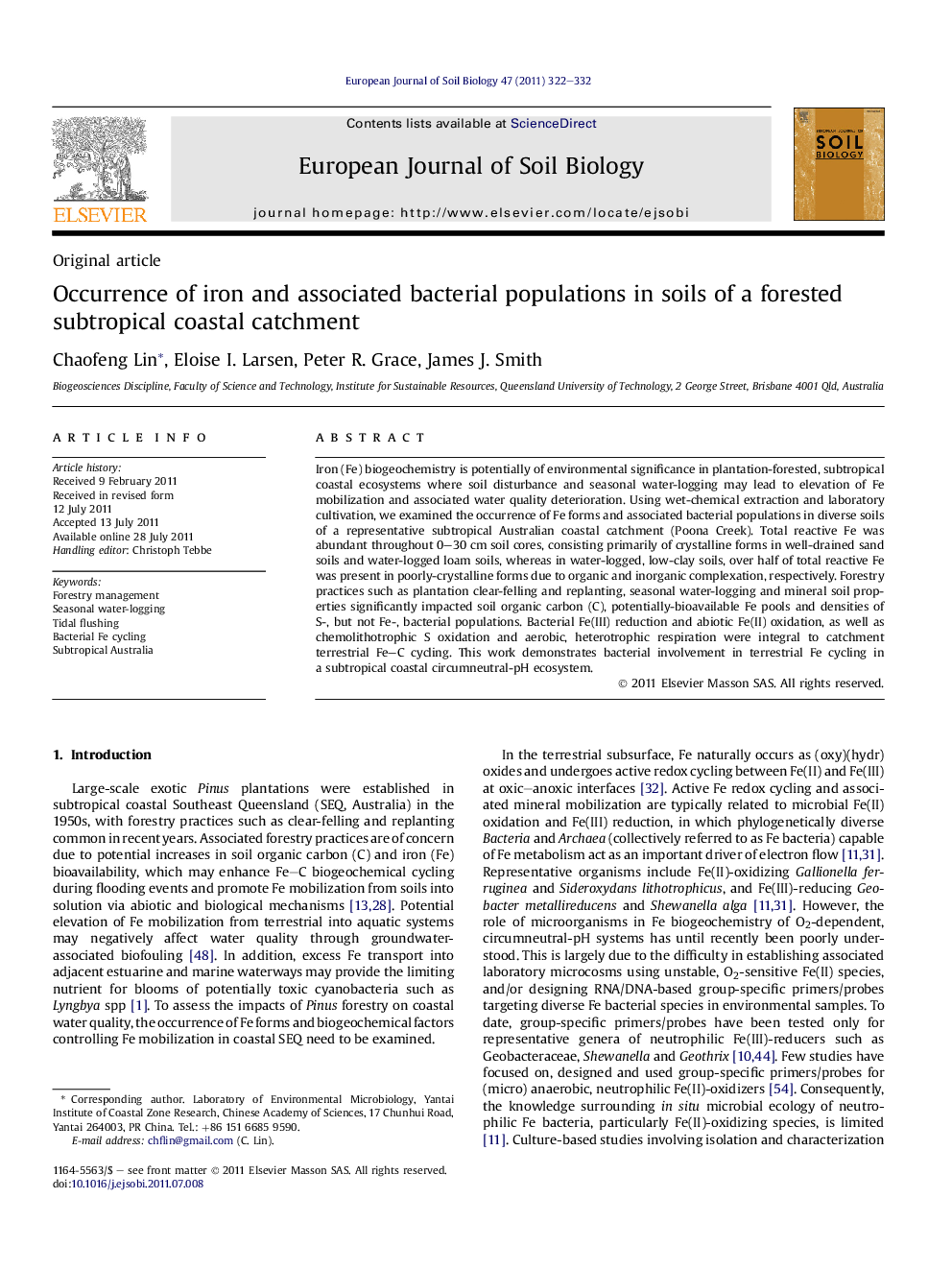| Article ID | Journal | Published Year | Pages | File Type |
|---|---|---|---|---|
| 4392212 | European Journal of Soil Biology | 2011 | 11 Pages |
Iron (Fe) biogeochemistry is potentially of environmental significance in plantation-forested, subtropical coastal ecosystems where soil disturbance and seasonal water-logging may lead to elevation of Fe mobilization and associated water quality deterioration. Using wet-chemical extraction and laboratory cultivation, we examined the occurrence of Fe forms and associated bacterial populations in diverse soils of a representative subtropical Australian coastal catchment (Poona Creek). Total reactive Fe was abundant throughout 0–30 cm soil cores, consisting primarily of crystalline forms in well-drained sand soils and water-logged loam soils, whereas in water-logged, low-clay soils, over half of total reactive Fe was present in poorly-crystalline forms due to organic and inorganic complexation, respectively. Forestry practices such as plantation clear-felling and replanting, seasonal water-logging and mineral soil properties significantly impacted soil organic carbon (C), potentially-bioavailable Fe pools and densities of S-, but not Fe-, bacterial populations. Bacterial Fe(III) reduction and abiotic Fe(II) oxidation, as well as chemolithotrophic S oxidation and aerobic, heterotrophic respiration were integral to catchment terrestrial Fe–C cycling. This work demonstrates bacterial involvement in terrestrial Fe cycling in a subtropical coastal circumneutral-pH ecosystem.
► Low organic C and high Fe content in catchment soils and sediments. ► Fe forms affected by organic complexation and seawater intrusion. ► Abundant Fe(III)-reducing bacteria in the absence of Fe(II)-oxidizing bacteria. ► Bacterial processes integral to soil and sediment Fe cycling.
